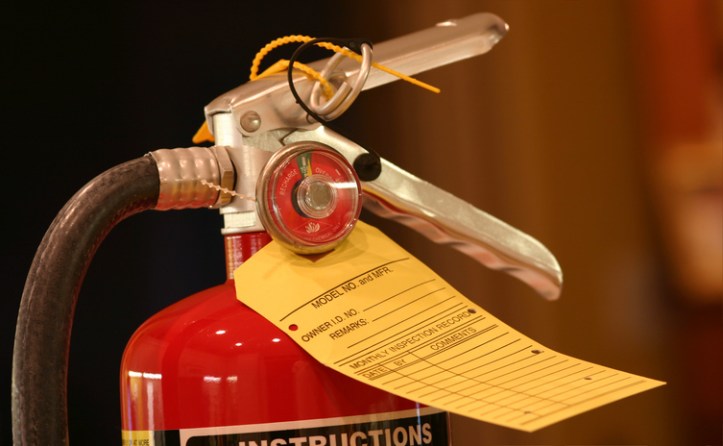Fire extinguishers are designed to release a chemical agent that can deplete fires in their incipient stage, just following ignition. Due to their unequivocal importance, employers are required to provide portable fire extinguishers at their workplace, mounted, located and identified, so that employees can make use of them, in accordance with OSHA’s 29 CFR 1910.157.
Eliminating a fire at its source before it reaches near-implacable levels is crucial. Therefore, the confidence that fire extinguishers are both readily available and can function reliably is a prime consideration for preventing property loss, injury, and even death. This type of assurance derives from the proper maintenance, inspection, selection, installation, recharging, and testing of portable fire extinguishers, a series of activities that have long been aided by the use of NFPA 10. The current edition of this standard is NFPA 10-2018 – Standard for Portable Fire Extinguishers, 2018 edition.
The range of guidelines addressed within NFPA 10-2018 is vast, and each provision comprises the expansive and integral interest of fire prevention. For example, the document states that fire extinguishers, as well as Class D extinguishing agents, should be inspected at least once every month.
Overall, NFPA 10-2018 is intended for persons tasked with selecting, purchasing, installing, approving, listing, designing, and maintaining portable fire extinguishers and Class D extinguishing agents, and it offers guidance for interests in relation to these associated but expansive activities so that the fire extinguishers that remain in use are of the utmost quality and can be used appropriately.
At the crux of this shared knowledge and guidance is the classification of fires. Different fires result from varying sources, and thus should be handled accordingly. According to NFPA 10-2018, there are five primary classes of fire:
Class A: result from ordinary combustible materials, including wood, cloth, paper, and many plastics.
Class B: burn in flammable liquids, combustible liquids, petroleum greases, oils, alcohols, and flammable gases.
Class C: involve energized electrical equipment.
Class D: fires in combustible metals, such as magnesium, titanium, zirconium, sodium, lithium, and potassium.
Class K: fires in cooking appliances that involve combustible cooking media, such as vegetable or animal oils and fats.
Each class of fire is effectively put out by an extinguisher class with which it correlates, i.e. fire extinguishers with a Class A rating are effective against fires involving paper, wood, and cloth. There is some variation to this, however, as addressed in the NFPA 10-2018 document.
Please note that fire extinguishers are a logical part of any fire safety plan or practice, and, therefore, guidelines for their usage and placement are also addressed in other standards developed and published by the National Fire Protection Association (NFPA).
Fire extinguishers, at least in some rudimentary form, have been recognized and used as the initial line of defense against erupting flames for centuries, so they’ve always rewarded their users with some level of safety. However, as with practically everything else produced and standardized, fire extinguishers have expanded in quality as time has progressed. Some of the earliest examples of what would be considered a fire extinguisher simply shot out water. During the past century, throughout which NFPA 10 has been consistently revised, the acceptable materials used for fire extinguishers have shifted and been displaced with the knowledge acquired throughout the years.
In fact, NFPA 10-2018 lists any extinguisher manufactured prior to 1955, as well as pressurized water fire extinguishers predating 1971, as obsolete no matter the circumstances. It also includes an assortment of other types in its now-obsolete list, including extinguishers using soda acid, chemical foam, carbon tetrachloride, methyl bromide, and chlorobromomethane (CBM), among others.
As the needs for fire extinguishers have changed over the years in response to growing industry needs and an ever-expanding body of knowledge, this standard has undergone changes from the previous revision. Other than the expansion of the standard’s scope, NFPA 10-2018 contains the following changes:
- Clarified provisions for electronic monitoring, obsolete extinguishers, extinguishers installed in areas with oxidizers, extinguisher signs, and extinguisher mounting equipment and cabinets.
- The maintenance of hose stations that are used in lieu of extinguishers is now addressed.
- The fire classification marking system is expanded to include markings for extinguishers rated for Class AC and Class AK, while removing information on obsolete equipment.
NFPA 10-2018 – Standard for Portable Fire Extinguishers, 2018 edition is available on the ANSI Webstore.
